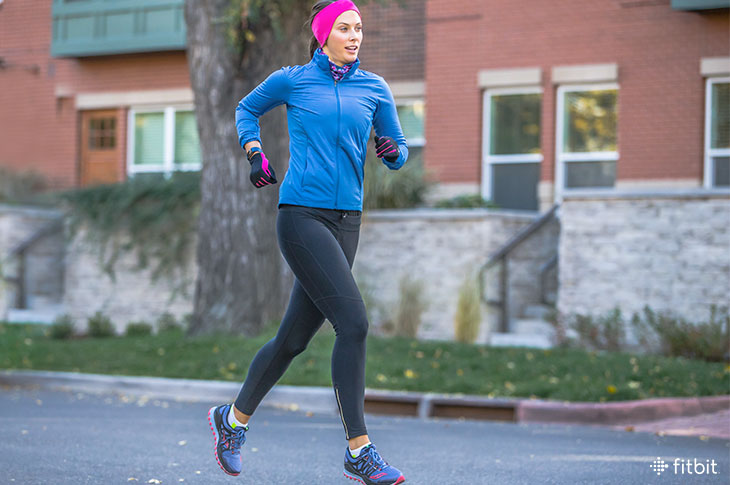
There’s a saying among outdoors enthusiasts: There’s no such thing as bad weather; only bad gear. And to an extent, it’s true! You don’t have to step out into a storm, but with today’s gear options and proper cold-weather dress techniques, there’s no need to keep your workouts inside once the air gets a little nippy, or snow starts to fall.
Here are five ways to help keep you safe, warm, and dry from head to toe.
Where: Your Head
What: An ear warmer or hat. Even though a study published in the British Medical Journal debunked the idea that you lose most of your body heat through your head, a hat is still a good idea—you’ll lose heat through any body part that’s uncovered. What’s more, your ears are extra susceptible to frostbite, in part because they stick out, but also because the skin is more sensitive to cold temps. (Your nose, cheeks, toes, and fingers are also extra susceptible to frostbite.) Keep your ears covered with a breathable, sweat-wicking headband or hat, which can help keep you extra-warm by keeping you dry.
Where: Your Neck (and Bonus: Your Face)
What: A lightweight gator. Covering your neck can prevent a cool breeze from blowing down your back, which never feels good. Choose a breathable material like merino wool, Coolmax, or fleece, so you can pull the gator up over your nose and cheeks on extra cold days. The fabric will stay relatively dry when you breathe, making it less likely for ice crystals to form.
Where: Your Torso
What: Layers. Start with a breathable, sweat-wicking base layer made from polypropylene or lightweight wool fabric. Cotton will absorb moisture, leaving you cold and damp. Next, wear a lightweight sweater or fleece as a midlayer (ideally, one that zips up over your neck). Finally, opt for a water-resistant yet breathable shell. Many outer layers have zippers at the armpits, which allow you to release heat without exposing your arms and chest to the cold. Wearing layers helps sweat leave your skin, keeping you warm and dry, and you can always peel clothing off if you get too hot.
Where: Your Feet
What: Sweat-wicking socks and water-resistant trail shoes. Sock fabrics like wool or polypropylene will help keep your feet dry. You may want to switch out your typical running or walking sneakers for trail shoes, which have a more pronounced tread on the soles, to help keep you upright on slick surfaces. Some shoes come with Gore-Tex uppers, which can also help keep water out when you’re walking on snowy sidewalks or trails. Of course, your best bet is to watch out for (and avoid!) ice and choose grass or at least a few inches of snow for your optimal winter running surface.
Where: Your Hands
What: Gloves. In the last few years, sporting goods manufacturers have been making lightweight gloves with special grips on the fingertips, so you can still swipe your phone, text, or tap your Fitbit tracker.
This information is for educational purposes only and is not intended as a substitute for medical diagnosis or treatment. You should not use this information to diagnose or treat a health problem or condition. Always check with your doctor before changing your diet, altering your sleep habits, taking supplements, or starting a new fitness routine.

If you have questions about a Fitbit tracker, product availability, or the status of your order, contact our Support Team or search the Fitbit Community for answers.
Please note: Comments are moderated and may not appear immediately after submission.